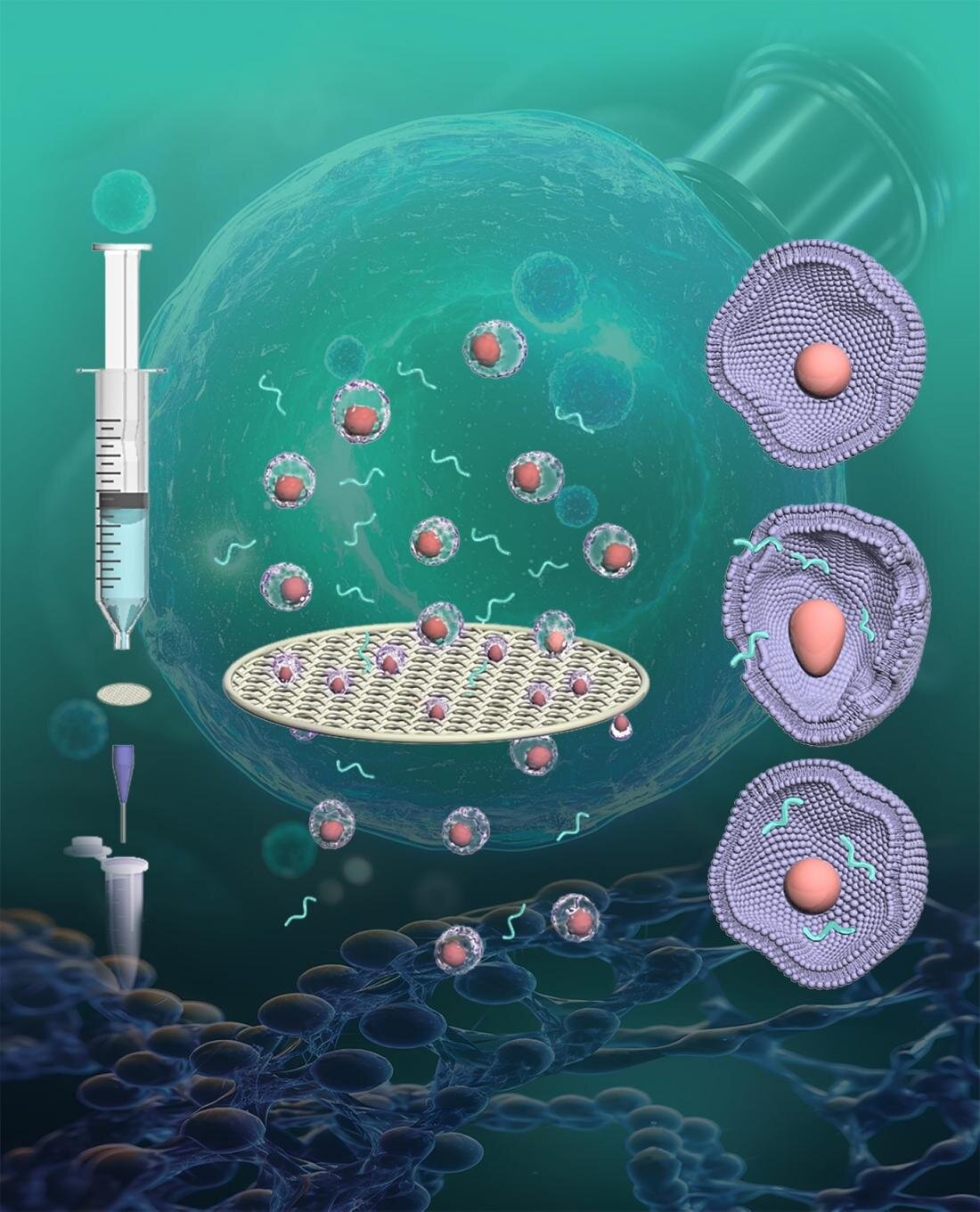Stainless Steel Filters Create Temporary Nanopores for Efficient Drug Delivery

Scientists at the Singapore University of Technology and Design (SUTD) have utilized their knowledge in microfluidics to create an innovative approach for physically altering cells, enabling more effective introduction of substances into them, which is transforming tailored therapies at the cell level.
Subscribe to our newsletter for the most recent science and technology news updates.
Advancements in medical science over the past few years have brought about remarkable progress, as researchers gain fresh perspectives on processes within cells. This enhanced comprehension has resulted in more compact and tailored therapies for diseases previously thought impossible to treat. As our grasp of hereditary disorders and cell reactions improves, an extensive portion of current studies aims to modify these elements at their core.
To enable advanced therapies—especially those targeting individual cells—the therapeutic compounds need to be introduced directly inside the targeted cells. Nevertheless, cell membranes act as barriers against harmful materials, making it challenging to deliver treatments effectively. Two primary methods exist to address this issue. One involves using transporters to assist the agents in crossing the cell membranes, whereas the other entails forming small openings (called transient nanopores) in the membrane to facilitate passage.
"Previous research tells us that the fast deformation of cells and the recovery of cells are key to enabling high efficiency for intracellular delivery," said Associate Professor Ai Ye from SUTD.
Nevertheless, current techniques that employ both strategies, including electroporation and lipofection, may result in permanent cellular injury or lead to significant toxic effects. The absence of an effective approach for delivering therapeutic substances into targeted cells has largely limited the use of innovative treatments like CAR-T therapy and genetic engineering.
Leveraging their knowledge of cell deformation at the single-cell level through microfluidic methods, Assoc. Prof. Ai and his group investigated the application of stainless steel filters combined with elastic liquids to physically form temporary nano-pores.
They introduced an innovative method that might pave the way for advancements in studies related to intracellular delivery within the paper titled, "Improved intracellular delivery using stainless steel filters and viscoelastic fluids: A highly effective substitute for traditional transfection." published in Analytical Chemistry .
Associate Professor Ai originally intended to employ micro-constrictions within microfluidic devices along with viscoelastic fluids for intracellular delivery—an approach he previously utilized in his studies. Following discussions with additional research teams and businesses participating in the ARISE program at SUTD, he recognized the necessity of seeking an alternative to the microfluidic chip to enhance processing capacity.
This resulted in the concept of employing stainless steel filters instead of silicone wafers, commonly utilized in conventional microfluidic systems. Stainless steel filters feature openings bigger than typical cell size, aiding in avoiding blockage and consequently reducing the chance of cell demise.
In the research, stainless steel filters acted as a model for producing uniformly sized openings, where viscoelastic liquids applied pressure to cause temporary nano-pores in the cells through mechanical action. Testing their device demonstrated that this technique can reach delivery rates up to 94.7%, while keeping most of the cells alive.
Associate Professor Ai noted that this was possible because of the rapid nature of the deformation, occurring within just a few microseconds. “This brief period of deformation allows for quick formation of nanopores in cell membranes and swift movement between the inside and outside of the cell,” he stated. “As a result, cellular damage is minimized, particularly when contrasted with electroporation.”
Although the findings are encouraging, Assoc. Prof. Ai feels additional research is necessary. "We must examine more cells to demonstrate the broad applicability of this approach, which still requires significant further work."
Furthermore, his group intends to develop an independent model that will be easier for industrial labs without microfabrication resources to use. In general, Associate Professor Ai remains confident in the capability of his team's method to enhance studies in cell engineering.
We hope this innovation reduces the barriers for researchers to engage in enhancing CAR-T treatment and genetic modification," he reflected. "We think this technology offers great versatility and consistency, making the cellular engineering procedure more straightforward.
More information: Qiang Zhao et al., Improved Cellular Uptake Using Stainless Steel Filters and Viscous Liquids: A Highly Effective Substitute for Traditional Transfection Methods, Analytical Chemistry (2025). DOI: 10.1021/acs.analchem.5c02251
Offered by the Singapore University of Technology and Design
This narrative first appeared on .
Posting Komentar untuk "Stainless Steel Filters Create Temporary Nanopores for Efficient Drug Delivery"
Please Leave a wise comment, Thank you